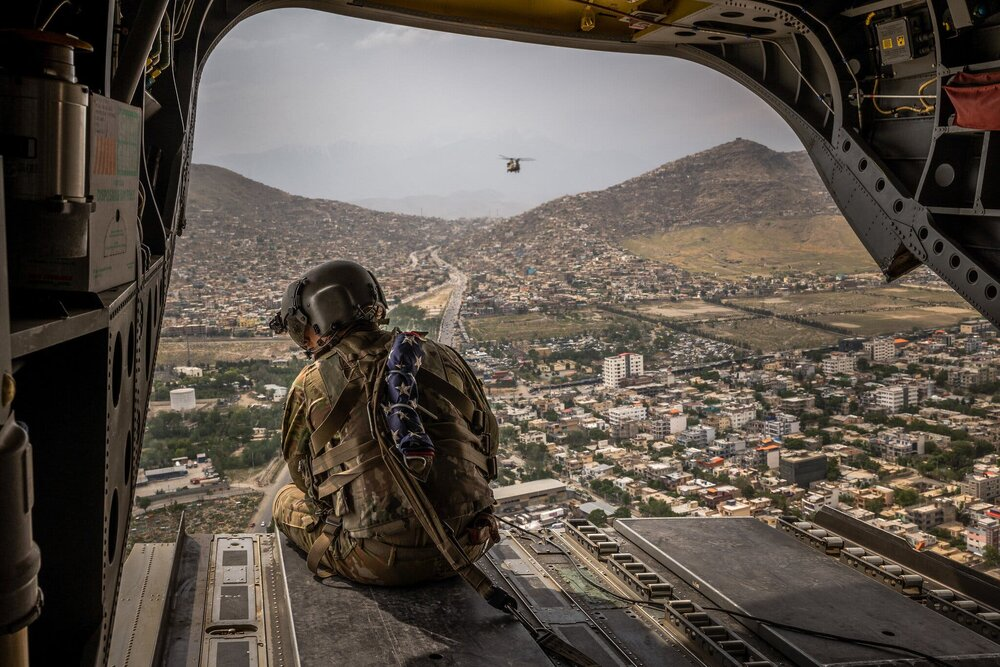
In fact, if the Heartland were to succeed in joining the Rimland, the maritime superiority of the United States and more generally of the thalassocratic powers would be over. At that point, the U.S. would only have to shift all its military weight to the Indo-Pacific region and unleash a war directly against China, perhaps under the pretext of Taiwan and claims on the South China Sea. Of course, much will depend on the ability of the Eurasian powers to stabilize Afghanistan, to provide for the risks of Daesh terrorism and other Salafist groups closer to Washington’s interests than to Kabul’s.
The role of other regional and international players has been crucial in Afghanistan since the U.S. withdrawal. On August 24, Russia hinted that it does not want to see U.S. troops deployed in Central Asia, by Foreign Minister Serghei Lavrov: “The presence of U.S. soldiers in the countries bordering Afghanistan would transform these nations in a target”. The next day, Russian President Vladimir Putin had a telephone conversation with his Chinese counterpart Xi Jinping. The two sides had an in-depth exchange of views on the situation in Afghanistan.
The leaders said they were ready to step up efforts to combat terrorism and drug trafficking from Afghanistan “reads the note” and stressed the importance of preventing the spread of Afghan instability towards neighboring countries. Putin noted that Russia and China share similar positions and interests on the Afghan question and has stressed that Russia is willing to communicate and coordinate closely with China, actively participating in the multilateral mechanisms dealing with the Afghan question. China respects “sovereignty, independence and integrity territorial of Afghanistan”, does not interfere in internal affairs, aiming at “a constructive role” for a political solution.
President Xi Jinping told his Russian counterpart that China “is willing to strengthen communication and coordination with all parts of the International Community and to encourage all Afghan parties to negotiate an open and inclusive political structure”. Russia concluded Putin in the interview is willing to coordinate with China for a “gradual transition of the situation in Afghanistan, to combat terrorism, to end drug trafficking and prevent the spread of risks to safety”. In the area, there are Russian military forces active in Tajikistan with about 7,000 men based around the capital Dušanbe and along the Afghan border. The recent agreement with China and military cooperation between Iran and Russia are moving in the right direction and both should be developed.
Afghanistan can become central to the Chinese Belt and Road Initiative project. Primary investors in Xinjiang, which is connected to Afghanistan via the Wakhan corridor, include the neighboring countries, namely Kazakhstan, Kyrgyzstan, and Tajikistan, but also include Russia, Uzbekistan, Pakistan, India, Mongolia and a small amount of Afghans. The latter are likely to increase, both in FDI and in trade. This is because Kazakhstan, Kyrgyzstan and Russia are all members of the Eurasian Economic Union (UEE), while Uzbekistan is considering joining it. This is significant because China signed a free trade agreement with the EAEU in September 2018. It is currently not preferential, which means that no tariff reduction mechanisms have been agreed. However, it is the subject of ongoing negotiations and, once carried out, will significantly increase Xinjiang’s trade with these countries. It is also relevant to note that both India and Pakistan are currently negotiating a free trade agreement with the Eurasian Economic Union.
Afghanistan is not yet in this context; its economy is too fragile to be bound by such an agreement right away. However, this is a moot point: The country has preferential tariff agreements in place designed to incentivize Afghan exports. This move will be encouraged by China as a pillar of the common desire to develop regional peace through trade.
Afghanistan would give China and other Central Asian nations a strategic boost as the country is placed as a central hub connecting West Asia, Central Asia, and Europe. With a total population of 32 million, it is also an attractive market for many, although it will take a carefully managed program to lift it out of poverty – ongoing wars have left Afghanistan 169th out of 180 countries in the ranking, based on United Nations Human Development Index.
China is building military bases and observation points on the border between Tajikistan and Afghanistan to prevent any infiltration of Islamist militiamen from the Wakhan Corridor, in the Afghan province of Badakhshan; the Chinese have been cooperating with Tajikistan for some time on the security front, including training Tajik forces.
Bordered by Pakistan to the south, Iran to the west, Uzbekistan, Turkmenistan and Tajikistan to the north and northeast, and China to the east, with new planned and existing BRI road and rail links linking it to Central Asia, an Afghan government capable of educating and repositioning its men in industry and willing to undertake trade and investment as an alternative to bullets and bombs, certainly has great potential. The macro-region of Central Asia in the immediate export radius of Afghanistan contains 400 million people.
